Potrebujeme váš súhlas na využitie jednotlivých dát, aby sa vám okrem iného mohli ukazovať informácie týkajúce sa vašich záujmov. Súhlas udelíte kliknutím na tlačidlo „OK“.
ASTM E2164-08
Standard Test Method for Directional Difference Test
Automaticky preložený názov:
Štandardná skúšobná metóda pre smerové Rozdiel test
NORMA vydaná dňa 1.3.2008
Informácie o norme:
Označenie normy: ASTM E2164-08
Poznámka: NEPLATNÁ
Dátum vydania normy: 1.3.2008
Kód tovaru: NS-44526
Počet strán: 11
Približná hmotnosť: 33 g (0.07 libier)
Krajina: Americká technická norma
Kategória: Technické normy ASTM
Kategórie - podobné normy:
Anotácia textu normy ASTM E2164-08 :
Keywords:
2-AFC (alternative forced-choice) test, Assessment/Assesors, Directional difference test, Paired comparison test, Perceivable differences, Sensory analysis, ICS Number Code 19.020 (Test conditions and procedures in general)
Doplňujúce informácie
| Significance and Use | ||||||||
|
The directional difference test determines with a given confidence level whether or not there is a perceivable difference in the intensity of a specified attribute between two samples, for example, when a change is made in an ingredient, a process, packaging, handling, or storage. The directional difference test is inappropriate when evaluating products with sensory characteristics that are not easily specified, not commonly understood, or not known in advance. Other difference test methods such as the same-different test should be used. A result of no significant difference in a specific attribute does not ensure that there are no differences between the two samples in other attributes or characteristics, nor does it indicate that the attribute is the same for both samples. It may merely indicate that the degree of difference is too low to be detected with the sensitivity (α, β, and Pmax) chosen for the test. The method itself does not change whether the purpose of the test is to determine that two samples are perceivably different versus that the samples are not perceivably different. Only the selected values of Pmax, α, and β change. If the objective of the test is to determine if the two samples are perceivably different, then the value selected for α is typically smaller than the value selected for β. If the objective is to determine if no perceivable difference exists, then the value selected for β is typically smaller than the value selected for α and the value of Pmax needs to be stated explicitly. |
||||||||
| 1. Scope | ||||||||
|
1.1 This test method covers a procedure for comparing two products using a two-alternative forced-choice task. 1.2 This method is sometimes referred to as a paired comparison test or as a 2-AFC (alternative forced choice) test. 1.3 A directional difference test determines whether a difference exists in the perceived intensity of a specified sensory attribute between two samples. 1.4 Directional difference testing is limited in its application to a specified sensory attribute and does not directly determine the magnitude of the difference for that specific attribute. Assessors must be able to recognize and understand the specified attribute. A lack of difference in the specified attribute does not imply that no overall difference exists. 1.5 This test method does not address preference. 1.6 A directional difference test is a simple task for assessors, and is used when sensory fatigue or carryover is a concern. The directional difference test does not exhibit the same level of fatigue, carryover, or adaptation as multiple sample tests such as triangle or duo-trio tests. For detail on comparisons among the various difference tests, see Ennis (1), MacRae (2), and O'Mahony and Odbert (3). 1.7 The procedure of the test described in this document consists of presenting a single pair of samples to the assessors. 1.8 This standard does not purport to address all of the safety concerns, if any, associated with its use. It is the responsibility of the user of this standard to establish appropriate safety and health practices and determine the applicability of regulatory limitations prior to use. |
||||||||
| 2. Referenced Documents | ||||||||
|
Podobné normy:
Historická
1.9.2013
Historická
1.4.2013
Historická
1.8.2013
Historická
1.11.2013
Historická
1.3.2013
Historická
1.4.2014
Odporúčame:
Aktualizácia technických noriem
Chcete mať istotu, že používate len platné technické normy?
Ponúkame Vám riešenie, ktoré Vám zaistí mesačný prehľad o aktuálnosti noriem, ktoré používate.
Chcete vedieť viac informácií ? Pozrite sa na túto stránku.



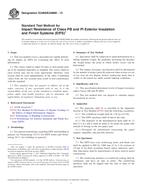 ASTM E2486/E2486M-13..
ASTM E2486/E2486M-13..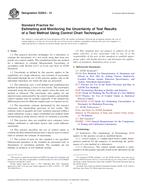 ASTM E2554-13
ASTM E2554-13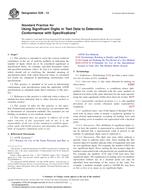 ASTM E29-13
ASTM E29-13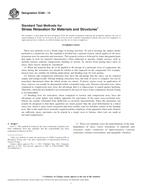 ASTM E328-13
ASTM E328-13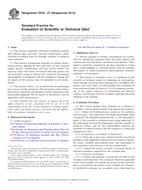 ASTM E678-07(2013)..
ASTM E678-07(2013)..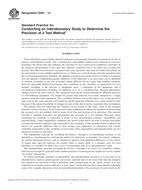 ASTM E691-14
ASTM E691-14
 Cookies
Cookies
